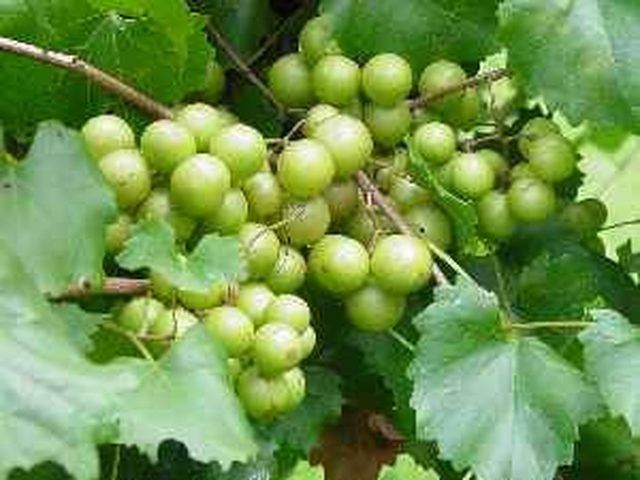Bulbs
Flower Basics
Flower Beds & Specialty Gardens
Flower Garden
Garden Furniture
Garden Gnomes
Garden Seeds
Garden Sheds
Garden Statues
Garden Tools & Supplies
Gardening Basics
Green & Organic
Groundcovers & Vines
Growing Annuals
Growing Basil
Growing Beans
Growing Berries
Growing Blueberries
Growing Cactus
Growing Corn
Growing Cotton
Growing Edibles
Growing Flowers
Growing Garlic
Growing Grapes
Growing Grass
Growing Herbs
Growing Jasmine
Growing Mint
Growing Mushrooms
Orchids
Growing Peanuts
Growing Perennials
Growing Plants
Growing Rosemary
Growing Roses
Growing Strawberries
Growing Sunflowers
Growing Thyme
Growing Tomatoes
Growing Tulips
Growing Vegetables
Herb Basics
Herb Garden
Indoor Growing
Landscaping Basics
Landscaping Patios
Landscaping Plants
Landscaping Shrubs
Landscaping Trees
Landscaping Walks & Pathways
Lawn Basics
Lawn Maintenance
Lawn Mowers
Lawn Ornaments
Lawn Planting
Lawn Tools
Outdoor Growing
Overall Landscape Planning
Pests, Weeds & Problems
Plant Basics
Rock Garden
Rose Garden
Shrubs
Soil
Specialty Gardens
Trees
Vegetable Garden
Yard Maintenance
How to Grow Scuppernong
How to Grow Scuppernong. Scuppernong, also known as Muscadine, is a North American native variety of grape that thrives in the southern states. One grapevine can create enough growth each year to cover an arbor, walkway or even provide shade for a deck or porch. In addition to producing a larger, more robust type of grape, Scuppernong plants...

Scuppernong, also known as Muscadine, is a North American native variety of grape that thrives in the southern states. One grapevine can create enough growth each year to cover an arbor, walkway or even provide shade for a deck or porch. In addition to producing a larger, more robust type of grape, Scuppernong plants attract birds, bees and butterflies. If you live in a climate that will support the growth of this variety, here are the steps you'll need to take to grow your own Scuppernong.
Things You'll Need
Scuppernong plants
Shovel
Trellis or other support system
Water
Insecticide
Fungicide
Pick a location that provides full sun, good drainage and healthy soil. Scuppernong grapes will not tolerate wet, compacted soil, and will fail in locations where water stands, even for short periods of time. While the root system is relatively shallow, at around 12 inches, the soil should consist of sandy loam, with a pH level around 5.5 to 6.5.
Decide what type of support system you will use to train the vines. Pick fencing or a trellis system that will allow for at least 6 to 10 feet of width per vine. You need to also consider how easy it will be to prune Scuppernong vines from the chosen location. For a larger crop, you can use post and wire support systems.
Start with cuttings or plants from a nursery to get the highest quality of fruit. While you cn grow Scuppernong from seed, pollination is required for the plants to reach their full potential. Choose a self-fertile variety and a female variety plant. If you are starting more than two Scuppernong vines, space the self-fertile plants between female plants.
Clear the planting area of weeds and grass. Use an herbicide, such as Round Up, to rid weed growth in the planting area. If you are uncertain about what type of herbicide to use, consult your County Extension Agency for advice.
Leave the longest runner (plant shoot from the trunk) and prune away all others. You will use the remaining runner to train the vine. Dig a hole at least 10 to 12 inches deep, 12 to15 inches from the trellis or support system, creating a trench so that the roots have room to spread. Space plants at least 15 feet apart. With roots at least 3 inches below ground, add topsoil to cover roots. Add water just enough to pack soil around the root system, then fill with topsoil.
Water each plant. Ison's Nursery and Vineyards recommends that you provide 24 gallons of water per week as vines develop and 36 gallons per week after your vines are established.
Train and prune the vines as they start to grow. Keep all side growth pruned from the trunk as the vines develop, leaving only the closest leaves. After the vine reaches the top wire, lead it down the wire. When a new runner sprouts, lead that in the opposite direction, forming a "T" shape.
Tips & Warnings
Treatment with insecticides might be necessary to control infestations of Japanese Beetles and other insect predators that can decimate the grape crop.
It takes 2 to 3 years before Scuppernong vines will bear fruit.
Pack soil up around base, at least 10 to 12 inches, in late fall or winter, to protect the plant from colder temperatures.
This plant can quickly grow out of control. Regular pruning and training are needed to keep the Scuppernong vines in check.
Do not fertilize during planting.
Do not spray insecticide on vines during bloom.